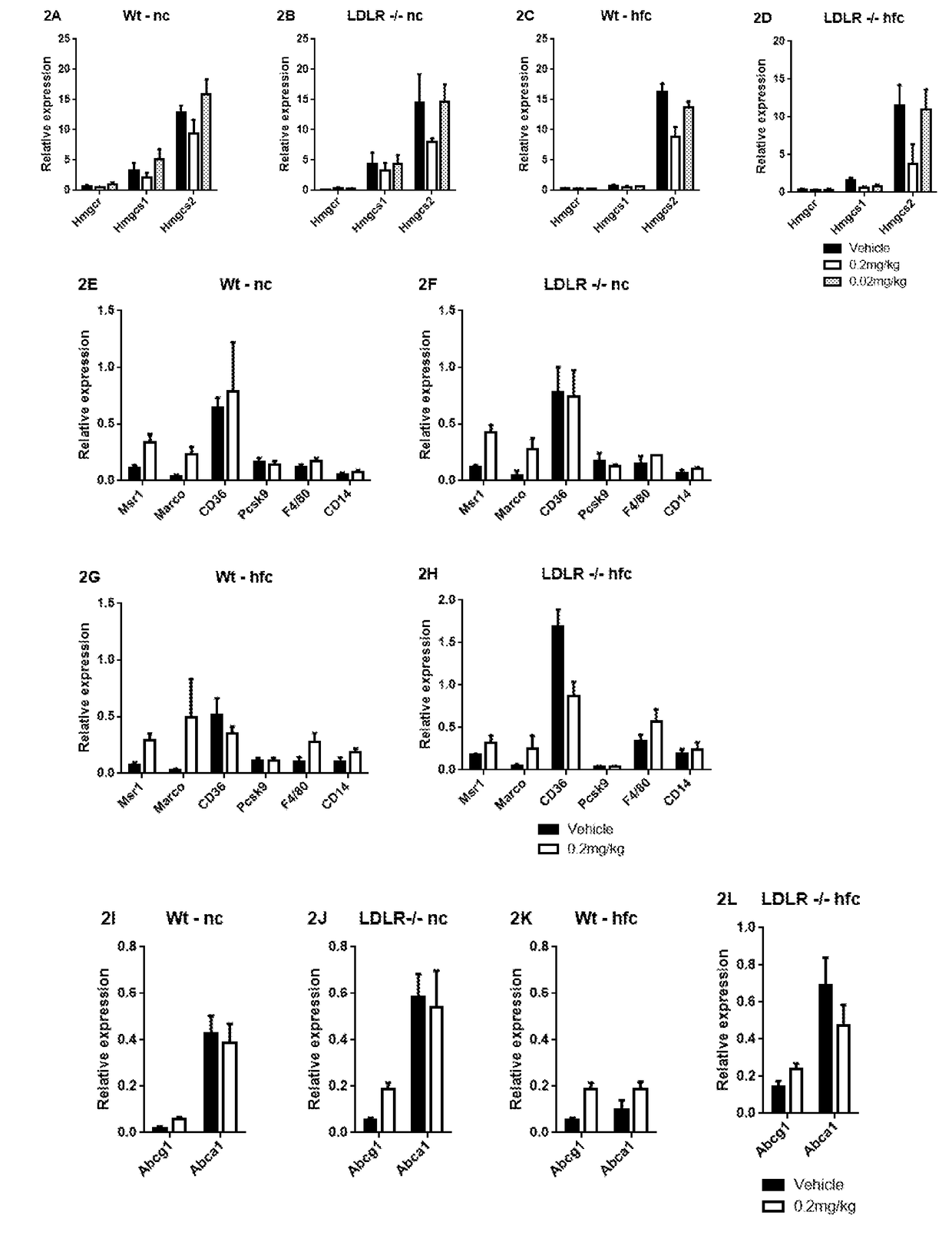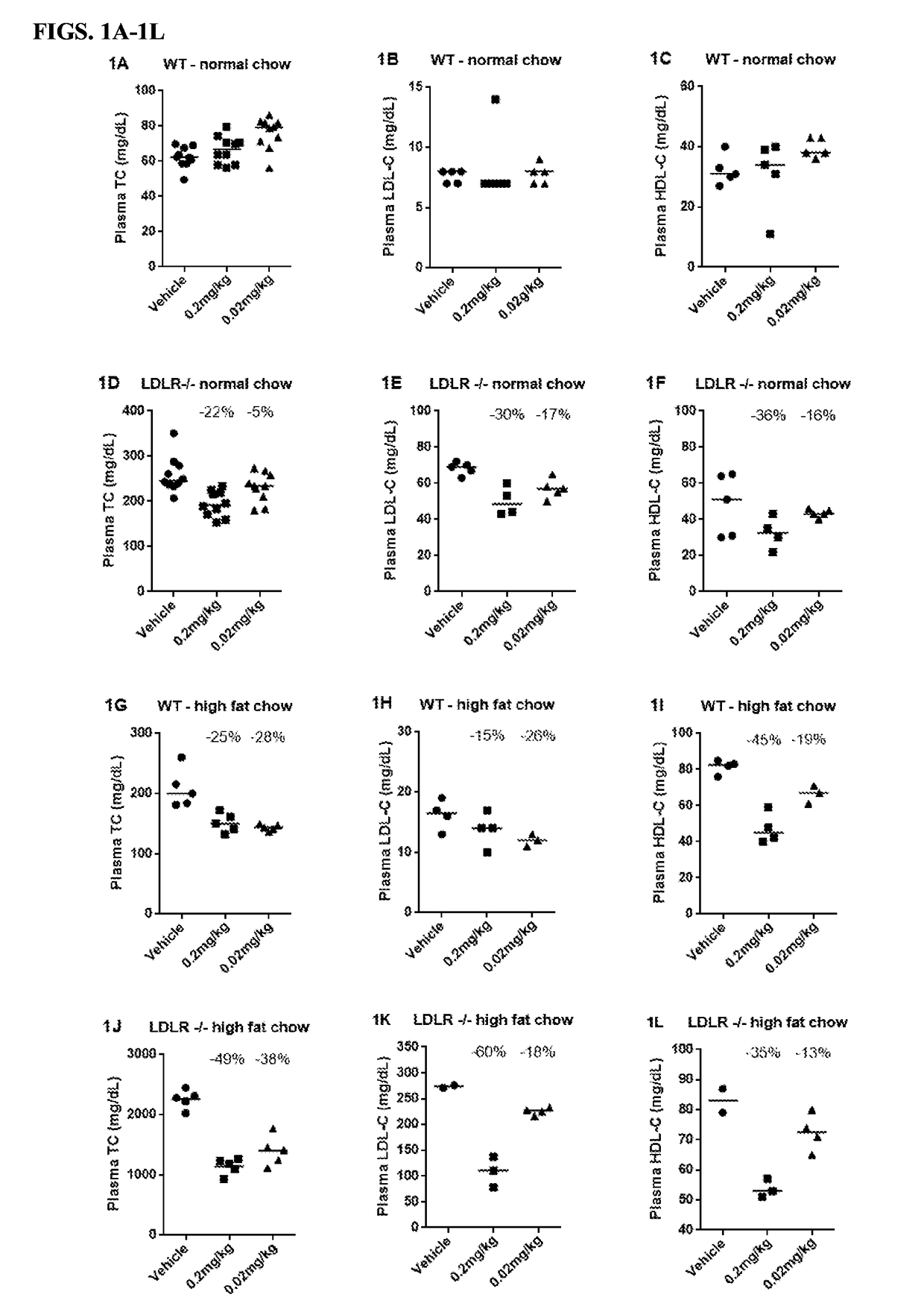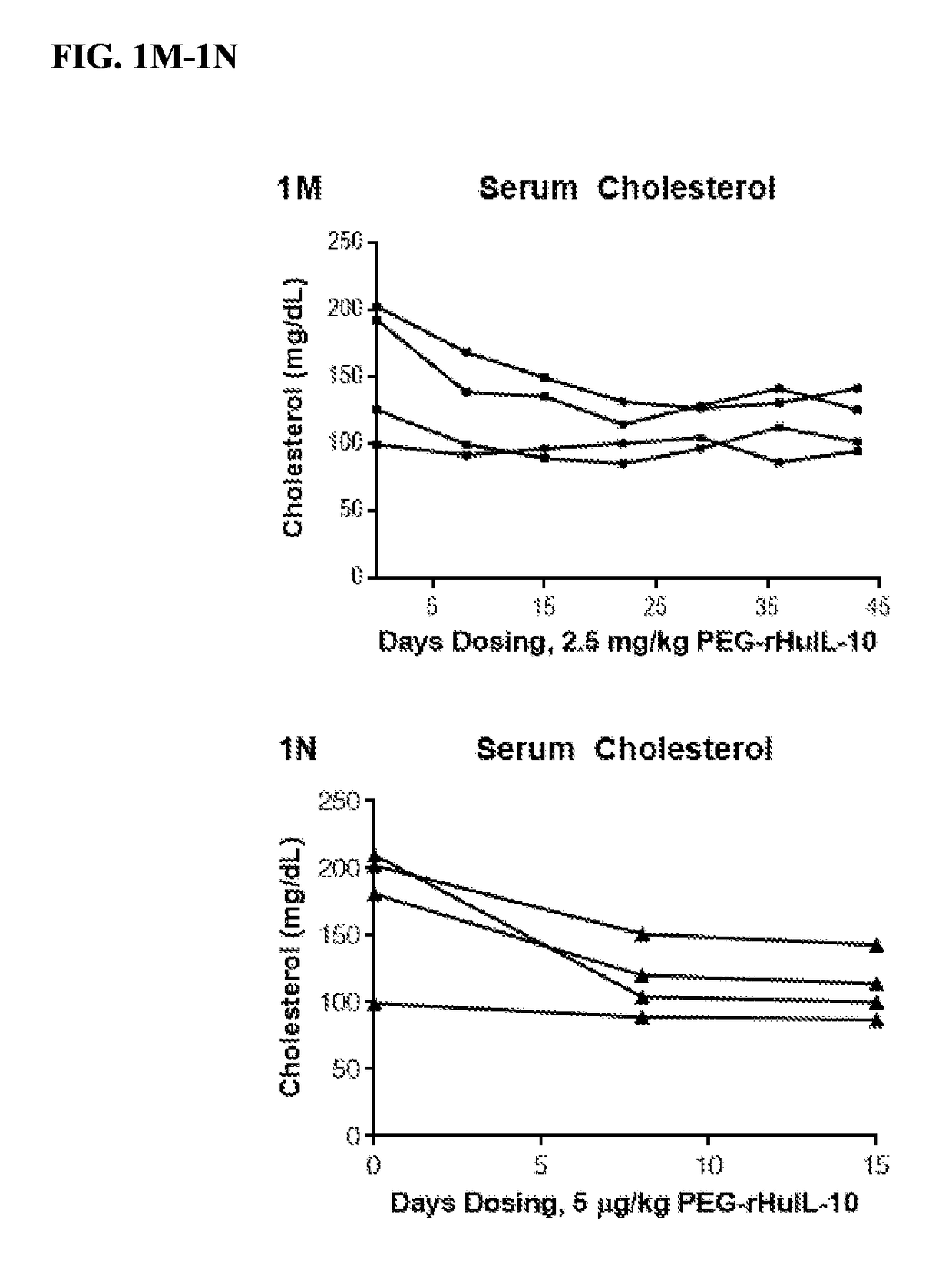Methods of Lowering Serum Cholesterol
- Summary
- Abstract
- Description
- Claims
- Application Information
AI Technical Summary
Benefits of technology
Problems solved by technology
Method used
Image
Examples
example 1
PEG-rMuIL-10 Lowers Plasma Cholesterol Levels
[0330]The regulatory effect of PEG-rMuIL-10 on plasma cholesterol levels in wild-type and LDLR− / − mice fed a normal and high fat diet was assessed.
[0331]Referring to FIGS. 1A-1C, wild-type mice on normal chow exhibited no decrease in total plasma cholesterol, LDL or HDL particles following administration of 1.0, 0.2, and 0.02mg / kg PEG-rMuIL-10, or vehicle control, SC daily.
[0332]The effect of PEG-rMuIL-10 in LDLR− / − mice was then determined. When total plasma cholesterols levels reached approximately 200 mg / dL in both LDLR− / − mice on normal chow diet and wild-type mice on high-fat chow diet, 0.2 mg / kg PEG-rMuIL-10, 0.02 mg / kg PEG-rMuIL-10, or vehicle control were administered SC. Mice that received 0.2 mg / kg PEG-rMuIL-10 exhibited cholesterol reduction of 22% (FIG. 1D; LDLR− / − mice) and 25% (FIG. 1G; wt mice). Mice that received 0.2 mg / kg PEG-rMuIL-10 exhibited LDL-C reduction of 30% (FIG. 1E; LDLR− / − mice) and 15% (FIG. 1H; wt mice). Mic...
example 2
PEG-rMuIL-10 Alters Liver Expression of Cholesterol Synthesis and Scavenger Receptor Genes
[0335]Using the Qiagen Lipoprotein Signaling and Cholesterol Metabolism, Fibrosis and Innate & Adaptive Immune Response Panels, the effect of PEG-rMuIL-10 on the expression of genes associated with liver function and cholesterol regulation was evaluated. As illustrated in FIGS. 2A-2L, only two primary groups of genes were altered in response to PEG-rMuIL-10 exposure.
[0336]The first group of regulatory genes is involved in endogenous cholesterol synthesis. Wild-type mice on normal chow diet (FIG. 2A), LDLR− / − mice on normal chow diet (FIG. 2B), wild-type mice on high-fat chow diet (FIG. 2C), and LDLR− / − mice on high-fat chow diet (FIG. 2D), were administered 0.2 mg / kg PEG-rMuIL-10, 0.02mg / kg PEG-rMuIL-10, or vehicle control, SC daily. Hmgcs1 and 2, two genes involved in endogenous cholesterol synthesis, were moderately but consistently decreased in the liver (FIGS. 2A-D). These data are consiste...
example 3
PEG-rMuIL-10 Alters Expression of Scavenger Receptors and the Presence of Kupffer Cells
[0339]In order to evaluate whether PEG-rMuIL-10 increases both scavenger receptors and the number of KCs, treated and untreated liver tissue was analyzed for differences in MSR1 expression by IHC.
[0340]Wild-type mice on normal chow diet (FIG. 3A), LDLR− / − mice on normal chow diet (FIG. 3B), wild-type mice on high-fat chow diet (FIG. 3C), and LDLR− / − mice on high-fat chow diet (FIG. 3D), were administered 0.2 mg / kg PEG-rMuIL-10 or vehicle control, SC daily. As indicated in FIGS. 3A and 3B, dosing with PEG-rMuIL-10 led to a slight increase in detectible MSR1 in wt and LDLR− / − mice on the normal diet. However, MSR1 levels in control tissue appeared to decrease in conjunction with increased dietary fat intake. The levels of detectible MSR1 were higher in wt and LDLR− / − mice on normal chow relative to the same type of mice on high fat chow. This result was confirmed with the use of IHC to quantify the ...
PUM
| Property | Measurement | Unit |
|---|---|---|
| Mass | aaaaa | aaaaa |
| Mass | aaaaa | aaaaa |
| Mass | aaaaa | aaaaa |
Abstract
Description
Claims
Application Information
 Login to View More
Login to View More - Generate Ideas
- Intellectual Property
- Life Sciences
- Materials
- Tech Scout
- Unparalleled Data Quality
- Higher Quality Content
- 60% Fewer Hallucinations
Browse by: Latest US Patents, China's latest patents, Technical Efficacy Thesaurus, Application Domain, Technology Topic, Popular Technical Reports.
© 2025 PatSnap. All rights reserved.Legal|Privacy policy|Modern Slavery Act Transparency Statement|Sitemap|About US| Contact US: help@patsnap.com



